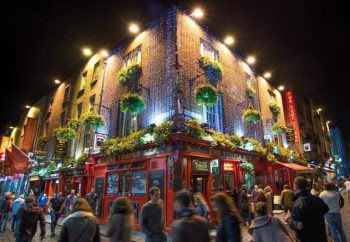English Spanish Parallel Texts – Using Regular Spanish Verbs in Present Tense (Part 3) Posted by Laura & Adam on Nov 30, 2021 in Language, Learning, Spanish Grammar, Spanish Vocabulary
In this lesson of our English Spanish Parallel Texts course and we are going to practice more using Regular Spanish Verbs in Present Tense. Start by reading the text in Spanish below. The English translation is provided later but please try not to look at it until you have read the Spanish version various times and tried your best to understand it.
There may be some words and phrases in the text that you are unfamiliar with, but you should be aiming to capture the main essence of what is happening. There will always be words and phrases popping up in real-life situations that you have never heard before, so it is important never to get too distracted by details.
If you want to investigate some of the words you don’t know with a dictionary that would be great, please do, but do this after trying your best to understand with what you already have in your head.
Check out these video lessons with information relevant to this topic:
Spanish verbs in Present Tense (Part 1)
Spanish verbs in Present Tense (Part 2)
Spanish Text
Santiago: ¿De dónde eres originalmente Emma?
Emma: Yo soy de España, de toda la vida. Pero mi familia viene de Irlanda.
Santiago: Qué interesante. Veo qué tienes el pelo pelirrojo y la piel blanca. No sé mucho de Irlanda. ¿Cómo es? ¿Toda la gente tiene el pelo pelirrojo?
Emma: Por supuesto que no. Mucha gente sí, pero no la mayoría. Irlanda es un país muy bonito. Muy verde. Y la gente es muy amable. Hablan con todo el mundo.
Santiago: ¿Cuál es la capital?
Emma: Belfast es la capital de Irlanda del norte y Dublín es la capital de la república de Irlanda.
Santiago: ¿Cuántas personas viven en Dublín? ¿Es una ciudad grande?
Emma: No es muy grande. No es como Madrid o Londres. Creo que viven aproximadamente quinientas mil personas en Dublín. Igual más.
Santiago: ¿Y la mayoría de los irlandeses trabajan en Dublín?
Emma: Sí, igual el treinta por ciento de la población.
Santiago: Guau, mucha gente.
Emma: Sí, tengo familia en Donegal, que está a tres horas de Dublín, y casi todos sus habitantes trabajan en Dublín.
Santiago: ¿Que tal es Dublín?
Emma: ¡Está genial! Me gusta mucho. Hay muchos sitios interesantes para ver. Mucha historia. Pero lo mejor son los bares por la noche. Bueno, por el día también. Pero por la noche siempre hay mucha gente tocando instrumentos y cantando en los bares.
Santiago: Me gusta la música folk de Irlanda.
Emma: A mí también.
Santiago: Beben mucha cerveza los irlandeses ¿no?
Emma: La Guinness sobre todo.
Santiago: ¿Y cómo comen? ¿Está bien la comida irlandesa?
Emma: Pues, no, si te digo la verdad. Pasteles y patatas.
English Text
Santiago: Where are you from originally Emma?
Emma: I’m from Spain, my whole life. But my family comes from Ireland.
Santiago: How interesting. I see that you have ginger hair and pale skin. I don’t know much about Ireland. How is it? Do all people have red hair?
Emma: Of course not. Many people do, but not the majority. Ireland is a very beautiful country. Very green. And the people are very nice. They talk to everyone.
Santiago: What is the capital?
Emma: Belfast is the capital of Northern Ireland and Dublin is the capital of the Republic of Ireland.
Santiago: How many people live in Dublin? Is it a big city?
Emma: It’s not very big. It’s not like Madrid or London. I think about five hundred thousand people live in Dublin. Maybe more.
Santiago: And do most of the Irish work in Dublin?
Emma: Yes, about thirty percent of the population.
Santiago: Wow, that’s a lot of people.
Emma: Yes, I have family in Donegal, which is three hours from Dublin, and almost all of its inhabitants work in Dublin.
Santiago: How is Dublin?
Emma: It’s great! I like it very much. There are many interesting places to see. Lots of history. But the best thing is the bars at night. Well, during the day too. But at night there are always a lot of people playing instruments and singing in bars.
Santiago: I like Irish folk music.
Emma: Me too.
Santiago: The Irish drink a lot of beer, don’t they?
Emma: Guinness above all.
Santiago: And how do they eat? Is Irish food okay?
Emma: Well, no, to tell you the truth. Pies and potatoes.
So, how did you get on? How much did you understand of the original text before checking the translation? Please let me know in the comments section below…
Don’t worry if you didn’t understand that much, practice makes perfect! Be patient and keep reading, hearing, writing, and speaking Spanish. See you next time!

Build vocabulary, practice pronunciation, and more with Transparent Language Online. Available anytime, anywhere, on any device.





Comments:
C.:
How do I make the dialog play?
Laura & Adam:
@C. Hola, these are written parallel texts, there is no audio, gracias, Laura